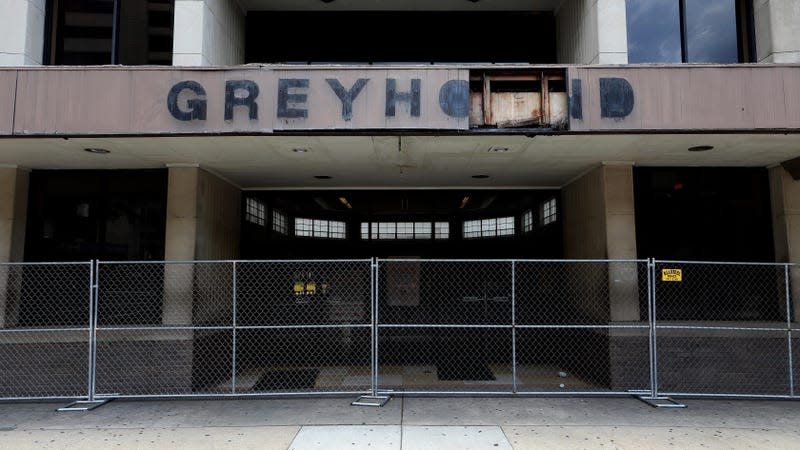Major Cities Are Losing Their Bus Terminals

When traveling without a car, affordability and availability make intercity bus services the first option for ten of millions of people across North America. However, dedicated bus terminals in cities are becoming an endangered species, pushing municipal governments to look for alternatives to prevent bus lines from clogging downtown streets as they operate curbside stops.
Philadelphia, Pennsylvania is the latest city to lose its bus terminal as the real estate the building sits on is sold off for redevelopment. Governing reports the station is on the proposed site of a new basketball arena for the Philadelphia 76ers. As a result, Greyhound has joined several low-cost lines at the curb on Market Street. Philadelphia city councilmember Mark Squilla told the outlet, “We can’t allow an operation to exist that’s, first of all, not safe, and second of all, is not good for our residents and businesses and their customers. We need to come up with a better solution.”
Read more
The City of Brotherly Love isn’t alone, Knoxville, Houston and Columbus have all lost their bus terminal in recent years. The general move has been caused by the end of Greyhound’s preeminence in inter-city bus travel. Low-cost competition has forced the legacy operative to cut costs and sell facilities on valuable real estate. The trend has left cities with the burden of finding appropriate and safe locations for private bus companies to place stops.
Chicago could be the next city to lose its bus terminal, which serves a half-million travelers annually. According to the Chicago Sun-Times, the Windy City would become the largest metropolitan area in the United States without an intercity bus terminal. The city is attempting to raise funds to purchase the facilities. That seems to be the way forward, where cities own bus terminals to establish a permanent location to integrate intercity buses with their own local public transportation system. However, it could take years before a long-term solution is fully realized.
More from Jalopnik
Sign up for Jalopnik's Newsletter. For the latest news, Facebook, Twitter and Instagram.

 Yahoo Autos
Yahoo Autos 